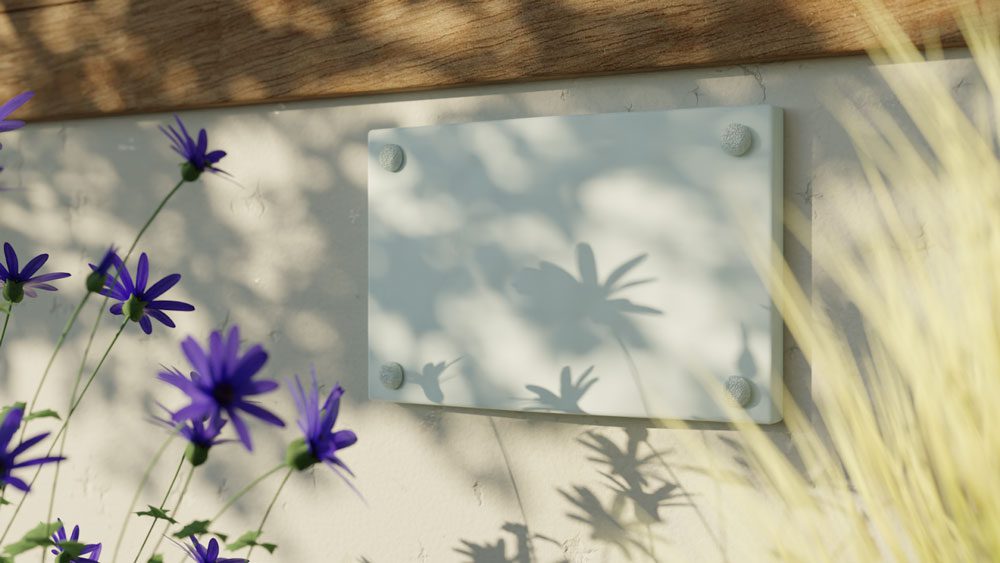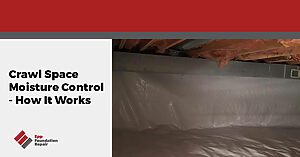Controlling the moisture in crawl spaces is a common struggle for homeowners. With so many factors contributing to moisture in your crawl space and varying opinions on how to stop it, it might be hard to know where to start and who to trust. But our years of experience have equipped us with the knowledge to understand the potential sources of moisture, why it is crucial to control it, and the proper way to prevent it altogether, and we are sharing that knowledge with you in this article.
How Does Moisture Enter Your Crawl Space?
Moisture can enter a crawl space through various pathways, including:
- Groundwater Seepage – Water from the surrounding soil can seep into the crawl space through the foundation walls or floor, especially during heavy rainfall or when the water table is high.
- Surface Water Runoff – Particularly in properties with poorly graded soil, rainwater or melted snow can flow into your crawl space through cracks in the foundation walls, gaps around doors or windows, or poorly sealed vents or access points.
- Plumbing Leaks – Leaking pipes within or near the crawl space can introduce moisture. Leaks often occur in supply lines, sewer pipes, drains, and HVAC condensate lines. Even small leaks can lead to significant moisture accumulation over time.
- Humidity – Condensation occurs when warm, humid air comes into contact with cooler surfaces, such as crawl space walls, floors, or HVAC ductwork. Condensation can form on these surfaces and contribute to moisture buildup in the crawl space.

How Does Moisture Affect Your Crawl Space?
Moisture can inflict a lot of damage on your crawl space, home, and health if not detected and resolved early. Consider the potential risks:
- Mold and Mildew Growth – Excess moisture creates a favorable environment for mold and mildew growth in crawl spaces. Mold growth damages building materials and poses health risks to occupants, particularly those with allergies, asthma, or respiratory conditions. Mold and mildew also produce musty odors that can circulate throughout your crawl space and home.
- Wood Rot and Decay – Moisture can cause wood to rot and decay over time, compromising the structural integrity of the crawl space and requiring costly repairs or replacements to remedy.
- Foundation Damage – Excessive moisture in the soil surrounding the foundation exerts pressure against the foundation walls, leading to cracking and bowing. Foundation damage can compromise the stability of your home and require extensive repairs or foundation stabilization measures.
- Pest Infestations – Damp, humid crawl spaces provide ideal conditions for pests such as termites, carpenter ants, and wood-boring beetles to thrive as these pests feed on and burrow into weakened or decayed wood.
- Poor Indoor Air Quality – High humidity levels, mold spores, and other airborne contaminants in your crawl space can circulate throughout the home via HVAC systems, ductwork, and gaps in the flooring or walls. Poor indoor air quality can worsen respiratory issues, allergies, and other health conditions you or your family may experience.
- Decreased Energy Efficiency – Moist air requires more energy to heat or cool, resulting in higher heating and cooling costs for the home. Additionally, moisture-related issues such as insulation degradation and air leakage can reduce home energy efficiency and comfort levels.

Should a Crawl Space Be Completely Dry?
Yes, a crawl space should be completely dry. While this may seem like an impossible task, it is doable with the proper steps. Please note that “completely dry” does not necessarily mean the absence of air or humidity. An ideal crawl space has a 45% to 55% humidity level, sufficient to create optimal air quality while preventing problems like mold or rot. And when your crawl space is dry, you have the added benefit of extra storage space underneath your home.
Five Steps to Control the Moisture in Your Crawl Space
1. Limit Exposure to Water
Limiting your crawl space’s exposure to water is important to control the moisture in your crawl space. This can be done in a few ways:
- Stop Plumbing Leaks – If the moisture in your crawl space is due to a plumbing leak, fixing it as soon as possible is essential.
- Regrade Your Yard – A properly graded yard slopes away from your home’s foundation. Proper grading allows rainwater and snowmelt to flow away from your home instead of towards it and seeping into your crawl space.
- Clean Your Gutters – Clean gutters prevent rainwater and snowmelt from saturating the soil around your crawl space, which can cause moisture to seep into the area.
- Install Downspout Extensions – Downspout extensions make your gutter system more efficient by carrying water at least 10 feet away from your foundation, preventing the soil near your crawl space from being oversaturated.
- Avoid Landscaping Near The Foundation – Plants near your foundation can dry out the soil near it, causing it to shift and potentially harming your foundation. On the other hand, some homeowners may overwater these plants, thus creating soggy soil around the foundation.
2. Cover Vents
Crawl space vents were initially created to promote airflow. However, crawl space vents have proven counterproductive by letting in humid air, frost, and water, causing more harm than good. That is why we always recommend permanently sealing your crawl space vents. However, covering the vents is insufficient to prevent moisture from penetrating your crawl space. You must also follow the next three steps.

3. Encapsulate Your Crawl Space
To waterproof your crawl space fully, you must encapsulate it. Encapsulation involves sealing the entire crawl space with a 12-mil polyethylene sheet. That means covering the floor and walls so no moisture can penetrate your crawl space. However, for the encapsulation to be fully effective, it should be coupled with a drainage system and a dehumidifier.
4. Install a Drainage System
A drain tile system with a sump pump is ideal for preventing water from building up near your crawl space. A drain tile system is designed to catch excess moisture in the soil and channel it to a sump pit. A sump pump in the pit will push the water a safe distance from the crawl space. Drain tile systems are especially beneficial in areas prone to flooding or with a high water table.
5. Install a Dehumidifier
The last step to controlling the moisture in your crawl space is to install a dehumidifier. Dehumidifiers promote air circulation and regulate moisture levels. They are vital in encapsulated crawl spaces since all the vents have been shut, making the dehumidifier the primary source of airflow.

What to Avoid When Controlling Crawl Space Moisture
To control the moisture in their crawl spaces, some homeowners resort to DIY methods. However, this is not a reliable strategy and can result in further damage and a waste of time and money. Consider the following scenarios:
- Spreading Sand – This DIY tactic only temporarily absorbs moisture from the dirt floor. It does not handle the lingering moisture in the air and cannot permanently stop moisture penetration.
- Fans or Dehumidifier Alone – Fans only circulate the air; they cannot remove the moisture. Dehumidifiers alone can minimize moisture in the crawl space, but the average dehumidifier is not strong enough to remove all the moisture in the air. Plus, without encapsulation, a dehumidifier must work extra hard to remove the moisture in the air, potentially causing a significant increase in your home’s energy bill.
- Spray Foam – While suitable for insulating certain areas in your home, spray foam in your crawl space will lock moisture into your wood floors and accelerate decay.
- Improper Encapsulation – Trying to encapsulate the crawl space yourself is difficult and potentially dangerous due to the cramped and rugged nature of crawl spaces. The type of polyethylene vapor barrier available in most home stores is not thick enough to offer a lasting seal. The installation also takes a lot of skill and understanding of proper waterproofing techniques to ensure a lasting solution.
Don’t wait to waterproof your crawl space. Our experienced team will inspect your crawl space thoroughly and provide a permanent solution to control the moisture, protecting you and your home. Our crawl space encapsulation services with a drainage system come with a 25-year warranty. We service customers in areas of Nebraska, Kansas, Iowa, and Missouri.







